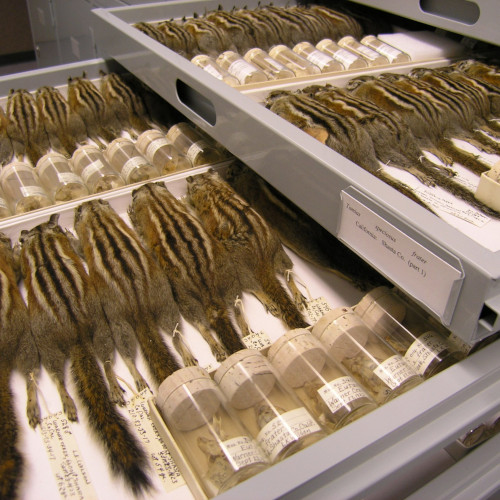Mammals
The MVZ mammal collection contains over 245,000 skin, skull, skeleton and fluid-preserved specimens. The collection is synoptic in coverage, and includes representatives of 25 of the 26 currently recognized orders of mammals, nearly 60% of mammalian families, and more than 50% of mammalian genera. Rodents and bats are especially well-represented, with large series of individuals for multiple taxa. Geographic coverage is worldwide, with emphasis on western North America, specifically the continental US, Alaska, western Canada, and northwestern Mexico. Also present are large and significant collections from Central America, South America, Southeast Asia, and Australasia.
Karyotype (chromosome) preparations are available for ca. 4,000 rodent specimens. These consist of slides of chromosome preparations and, in some cases, black and white photos and/or 35 mm negatives of chromosome spreads. The mammal collection also houses large series of lab-raised specimens from research by F. B. Sumner, R. D. Sage, W. Z. Lidicker, and Michael Nachman.45

Common uses of the collections include morphological and genetic studies of mammalian systematics, phylogeography, and evolution. Specimens in the collection have served as the basis for studies of epidemiology, parasitology, paleontology, and zooarchaeology, as well as stable isotope studies of ecology and environmental toxicology.
